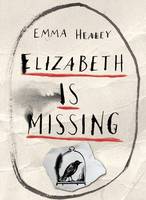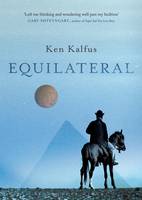Emma Healey, Elizabeth is Missing (2014)
Timur Vermes, Look Who’s Back (2012)
Translated from the German by Jamie Bulloch (2014)
Today I’m looking at two debut novels which really stand out to me for how they use first-person narration to create dramatic irony – so we know more than their narrators do, sometimes amusingly so, sometimes tragically.
 Emma Healey’s Elizabeth is Missing is simply one of the most haunting books I’ve read so far this year. Its protagonist, Maud Horsham, has dementia, which makes her narration a constantly renewing present. Here, for example, is Maud looking in a drawer:
Emma Healey’s Elizabeth is Missing is simply one of the most haunting books I’ve read so far this year. Its protagonist, Maud Horsham, has dementia, which makes her narration a constantly renewing present. Here, for example, is Maud looking in a drawer:
…there is a packet of lamp posts, tiny lamp posts with lead through the middle. The right word for them is gone and I pick one up, trying to remember it, pressing the end into the wood of the drawer until the tip breaks off. It’s satisfying and I pick up another just to break it.
The doorbell rings. I drop the pencil and bang into a bookcase in my hurry to leave the room. There are two dirty cups on a shelf. I collect them, and in the hall realize one has some tea in it. I drink it up, though it’s cold, and then put both cups on the bottom stair. (p. 217)
One moment, Maud can’t remember what a pencil is called; the next, she knows, without realising that she had ever forgotten. An action intended to jog her memory immediately becomes an empty ritual – and so on. Over the course of the book, as we get to know Maud better, these kinds of details have a powerful cumulative effect.
But Healey goes further than this: in the present, Maud searches for her friend Elizabeth; she also takes us back seventy years, to the time (which she recalls quite clearly) when her sister Sukey disappeared. In other words, the novel revolves around two mysteries, which would normally be all about making connections between details to create a bigger picture – but Maud is losing her ability to make such connections. This is what truly gives Elizabeth is Missing its power: the further along she goes, the more Maud is able to uncover – but she can’t perceive what it is that she has revealed. Only we, as readers, can.
In some ways, Elizabeth is Missing reminded me of Nathan Filer’s The Shock of the Fall, in its depiction of a narrator with a damaged psyche – and it won’t surprise me at all if Healey’s novel becomes as widely read. But Elizabeth is Missing really got under my skin, gave me that shivery feeling that comes when I realise I’m reading a book’s that’s very special. That feeling is why I read books in the first place.
***
 Timur Vermes’ Look Who’s Back sees Adolf Hitler waking up, alive and well, in 2011. He’s not too bothered about finding out why this has happened, more saddened at the condition of the Germany he sees around him, and sets his heart on putting it right. Soon he has a platform that befits the age: mistaken for an exceptionally talented impersonator, he’s soon a YouTube sensation, and even given his own TV show.
Timur Vermes’ Look Who’s Back sees Adolf Hitler waking up, alive and well, in 2011. He’s not too bothered about finding out why this has happened, more saddened at the condition of the Germany he sees around him, and sets his heart on putting it right. Soon he has a platform that befits the age: mistaken for an exceptionally talented impersonator, he’s soon a YouTube sensation, and even given his own TV show.
Look Who’s Back makes much play of the incongruity of Hitler being in the present day: Vermes’ Hitler is quick on the uptake in some respects (he readily grasps the Internet and sees how useful it could have been for him in wartime), but not others (‘We’re all agreed the Jews are no laughing matter,’ says his producer; Hitler agrees, though for very different reasons). I expect I won’t have caught all the nuances of the satire that a German audience would; but still I found Look Who’s Back satisfyingly amusing.
Jamie Bulloch’s translation casts Hitler’s voice as long-winded, old-fashioned, sure of itself. And it’s the certainty of that voice that helps create what, for me, is perhaps the most interesting effect in the novel. Look Who’s Back turns the insidiousness of Hitler’s rhetoric back on itself: where once he could persuade people around to his way of thinking, now Hitler is being outmanoeuvred by language – he doesn’t realise that he’s being made fun of by the media folk around him. As with Elizabeth is Missing, the very restrictions of the narrative voice give us a better vantage-point – and the view is one to savour.
***
Elizabeth is Missing will be published in the UK by Viking on 5 June. Read more reviews at: 50 a Year; Novelicious; Lily Meyer for Tottenville Review; My Good Bookshelf.
Look Who’s Back is published in the UK by MacLehose Press. Read more reviews at: Workshy Fop; A Common Reader; The Friendly Shelf; Winstonsdad’s Blog.
Like this:
Like Loading...
















Recent Comments